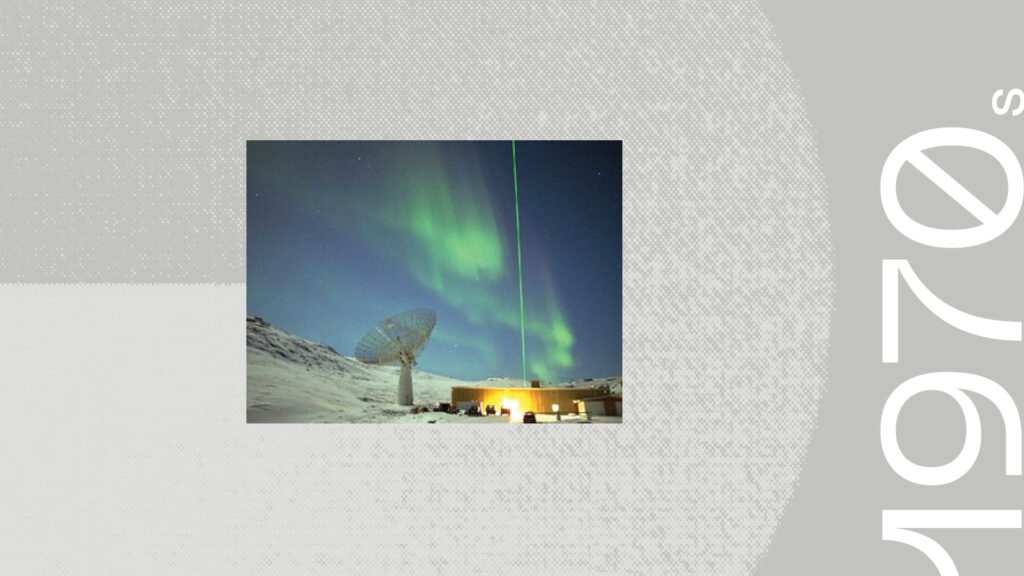
SRI has conducted pioneering atmospheric research and has built advanced radar facilities since the 1950s. Information provided by SRI scientists at key installations helped keep the U.S. safe during the Cold War. In the 1970s, we established the first incoherent scatter radar facility in an auroral zone.
Today, data from SRI-operated radar research facilities in various locations are used by hundreds of scientists around the world, and dozens of researchers and students visit the sites each year. Research includes space weather, global climate change, information technology, and spacecraft communications.
1950’s
SRI’s decades of atmospheric research began in the 1950s when we built and began operating radars in Alaska to look at radar effects of the aurora borealis. The research was important to U.S. defense efforts during the Cold War because of concern that intercontinental ballistic missiles (ICBMs) originating in the USSR would pass over the North Pole and approach the U.S. through the auroral regions. U.S. defense radars needed to clearly distinguish between USSR ICBMs and natural aurora. SRI’s critical research on radar aurora meant that U.S. early-warning radars wouldn’t be fooled into triggering an unwarranted nuclear launch.
1960’s
In 1962, SRI constructed and operated diagnostic radars as part of the Fishbowl High-Altitude Nuclear Test Series at Johnston Island in the mid-Pacific Ocean. The objective was to determine the effects of high-altitude nuclear events on U.S. radar systems, so that our nation would be better prepared to operate its military radars should a nuclear exchange between the U.S. and USSR occur.
1970’s
From 1971 to 1982 for the U.S. Defense Nuclear Agency, SRI built and operated the first incoherent scatter radar at an auroral zone location—Chatanika, Alaska.
Radars that SRI had used in the Pacific Ocean for high-altitude nuclear tests in the 1960s measured radar effects, but gave almost no definitive information about the physics involved. To learn about those physics, a new type of very powerful radar was needed: incoherent scatter radar. The radar needed to be operated at auroral latitudes where the structure and dynamics of the natural auroral atmospheric mimicked the structure and dynamics of the nuclear-disturbed atmosphere. The Chatanika facility was built for that purpose and used to investigate atmospheric, ionospheric, and magnetospheric phenomena.
Support for the radar gradually transitioned to the National Science Foundation as the probability of DoD needing it for high altitude test diagnostics diminished over time.
The Chatanika facility was the first Auroral Zone Incoherent Scatter Radar in the world. It produced hundreds of scientific papers and tens of Ph.D. theses in its 11 years of operation. In 1983, the facility was moved to Sondrestrom, Greenland.
1980’s to today
Under the auspices of the National Science Foundation, the Chatanika incoherent scatter radar facility moved to Sondrestrom, Greenland in 1983. Operated by SRI since then, hundreds of scientists around the world use the facility’s data, and dozens of researchers and students visit the site each year. Research includes space weather, global climate change, information technology, and spacecraft communications.
The facility is host to more than 20 instruments, most of which provide unique and complementary information about the polar upper atmosphere. Together, these instruments advance knowledge of upper atmospheric physics and determine how the tenuous neutral gas interacts with the charged space plasma environment.
For the NSF, SRI also manages and operates major research facilities at Poker Flat, Alaska, Resolute Bay, Nunavut, Canada, and Arecibo, Puerto Rico.



